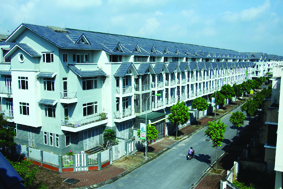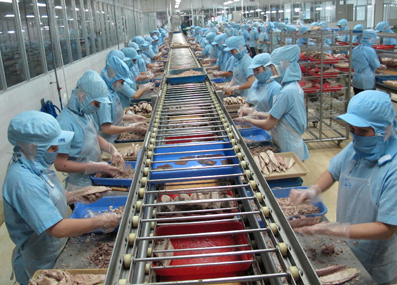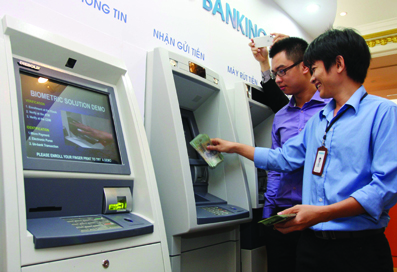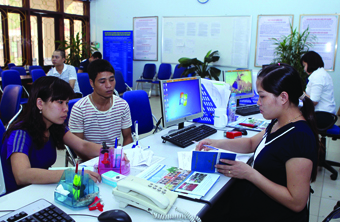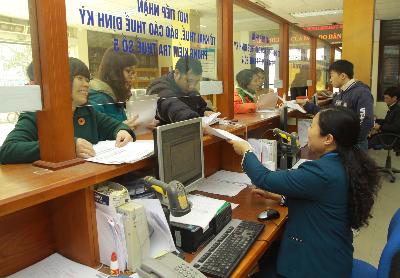* Substantial changes in revised laws to take effect in favor of businesses, foreign investors:
The revised Enterprise Law has cut five procedures (against current ten procedures) and shortened the time required to perform enterprise registration procedures from 34 days to six days.
Under the revised law, names of business lines and trades are no longer specified in the enterprise registration certificate. In addition, requests, procedures and costs for registration adjustments and changes, and names of business lines no longer exist.
Enterprises would be able to avoid legal risks such as “conducting business lines or trades not registered” or “conducting business lines or trades not stated in the enterprise registration certificate”.
The amended Investment Law eradicates investment certificates for all domestic investment projects, regardless of their size and business sector. It only requires investment registration certificate for projects of foreign investors and foreign-invested enterprises (FIEs) to which foreign investors contribute at least 51 percent of capital or foreign investors or FIEs holds at least 51 percent of charter capital.
Under the Law, the time limit for granting investment certificates is shortened from 45 days to 15 days. This is the first time Vietnamese enterprises are free to conduct any business line not banned by law. Article 6 of the revised Investment Law clearly specifies six banned sectors and trades as well as a list of 267 conditional business lines.
The Enterprise Law and Investment Law (revised) regard conditional business lines and trades and corresponding business conditions prescribed by law for people and enterprises as restriction to citizens’ right to enterprise. Therefore, regulations on conditional business lines and trades and corresponding business conditions must conform to Clause 2, Article 14 of the 2013 Constitution: “Human rights and citizens’ rights may not be limited unless prescribed by a law solely in case of necessity for reasons of national defense, national security, social order and safety, social morality and community well-being.”
Besides, changes in relevant articles and clauses of the revised Enterprise Law would considerably improve the protection of investors’ rights and interests in Vietnam. The Law would facilitate minority shareholders in initiating lawsuits against companies’ managers, diversify companies’ stakeholders in accordance with international law, and increase competence of shareholders’ general meeting to consider and accept companies’ transactions with affiliated persons.
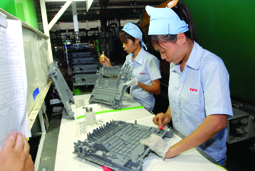 |
Plastic-part production chain in Taiwan’s Seiyo Vietnam Co., Ltd. (Bac Ninh province)__Photo: Danh Lam/VNA |
The two laws revise six tax laws, namely the Enterprise Income Tax Law, Personal Income Tax Law, Law on Value-Added Tax, ExciseTax Law, Royalties Law and Tax Administration Law, and remove the 15-percent cap on enterprises’ expenses for advertising, marketing, sales promotion, guest reception and conferences.
Under the laws, businesspersons that earn less than VND 100 million a year are exempted from personal income tax. With an annual income of more than VND 100 million, businesspersons have to pay personal income tax with the tax rate based on turnover from each production sector or business line.
Wages for Vietnamese crews working in foreign shipping firms or Vietnamese shipping companies engaged in international transportation as well as shipowners and individuals using ships to supply goods and services for offshore fishing and crews on board ships will be exempted from personal income tax.
Three groups of products, including fertilizers, livestock feeds and special-use machinery and equipment for agricultural production, are eligible for zero-percent value-added tax instead of current five-percent tax.
* Five major criteria urged to be fulfilled for higher national competitiveness:
The Government has requested ministries, sectors and localities to focus on the five basic criteria that have not been implemented, including construction licensing, property ownership, credit access, contract performance, and handling of insolvent enterprises. They are among criteria used by the World Bank to rank economies’ business environment.
The request was made at a monthly cabinet meeting on December 30, 2014, discussing the implementation of Resolution No. 19/NQ-CP of March 18, 2014, on the improvement of the business environment and national competitiveness.
By the end of 2015, Vietnam’s business environment index must be equal to that of ASEAN 6 on the WB’s ranking, said the Government, asking ministries, sectors and localities to maintain achieved indices of tax payment, social insurance premium payment, business start-up, investor protection and electricity access; and focus on the institutional reform and publicize on-going administrative reforms.
The Government assigned the National Council for Sustainable Development and Competitiveness to work with the Ministry of Planning and Investment before submitting to the Government for issuance a resolution on further improvement of business environment and national competitiveness in the first quarter of 2015.
Ministries and sectors will, within the ambit of their tasks and powers, have to review administrative procedures to make amendments and supplementations to circulars and joint circulars or submit them to the Government or the Prime Minister for consideration and decision if they fall beyond their competence.-
* Used information technology products to be permitted for import in certain cases:
Deputy Prime Minister Hoang Trung Hai has given his instructions on import of second-hand information technology (IT) products in the list of banned imports.
The Deputy PM assigns the Ministry of Information and Communications to work with the Ministry of Industry and Trade, Ministry of Justice and relevant agencies in studying and formulating the PM’s draft decision on a number of cases in which used IT products on the list of banned imports are allowed to be imported, clearly stipulating import conditions, criteria and procedures.
The Minister of Information and Communications may be assigned to consider and decide on these cases but should limit the import of old, backward and poor-quality IT products and waste so as to protect the environment and domestic production, and then report to the Prime Minister in the second quarter of this year.
Since there are no regulations concerning the issue so far, the Deputy PM requests the Ministry of Information and Communications to explain the necessity for MTV Nidec Seimitsu Ltd. Co. and Hoya Glass Disk Vietnam Company to import used IT products on the list of banned imports, types and quantity of imported products and management mechanism for inspection and supervision of their use, and report to the PM for decision.-
* Enterprises to self-certify origin of their exports in commercial invoices:
In 2015, instead of applying for a certificate of origin (C/O) for each export shipment, enterprises may take the initiative in declaring the origin of their export goods in commercial invoices.
Accordingly, manufacturers will be able to self-certify the origin of their goods to enjoy preferential tariffs for their exports to Indonesia, the Philippines and Laos. This is a pilot project involving Vietnam to prepare for the application of the self-certification mechanism in the ASEAN bloc in 2015 together with the current normal system.
At a seminar recently hosted by the US Agency for International Development, Vuong Duc Anh, representative of the Ministry of Industry and Trade’s Import-Export Department, said the project would last one year. ASEAN member countries would reach consensus on the application of the new mechanism to enterprises in a wider scope compared to that of the pilot project, he noted.
Self-certification of origin of goods is a trend in new free trade agreements to which Vietnam will be a contracting party such as the Trans-Pacific Partnership (TPP) with large markets like the U.S. and Japan. Therefore, the Ministry of Industry and Trade has been considering to shift from the grant of C/O to the mechanism of self-certification.
With the self-certification of origin, it is expected that there will be more enterprises getting the best of preferential tariffs as they can cut costs, save time and increase their autonomy. Instead of asking for certificates of origin granted by institutions authorized by the Government, enterprises eligible for self-certification will make a declaration of invoices evidencing the origin of their products and send it to importers. The importers will produce such declaration to the customs office at the time of importation for enjoying preferences.
At present, there are two self-certification of origin pilot projects in the ASEAN. The first one enables all exporters to self-certify the origin of their products while the second one in which Vietnam is taking part permits only exporting manufacturers to self-certify their products.
Accordingly, enterprises that conduct only simple processes are not regarded as manufacturers qualified for self-certification of origin.
In addition, enterprises must have never violated the regulations on certification of origin, tax and customs; earned a certain export turnover and have experts knowledgeable about the rules of origin in the ASEAN Trade in Goods Agreement.
Enterprises that self-certify the origin of their goods must take responsibility before law for their declaration contents otherwise they will have their self-certification of origin permits revoked and pay fines equal to two or three times of the value of their shipments.
* Delayed enforcement, adjustment of banking prudential ratio regulations proposed:
Members of the bond market, mostly banks, that are currently holding more than 80 percent of the total government bonds in Vietnam via the Vietnam Bond Market Association (VBMA), have recently proposed their managing agency to adjust a number of provisions of the SBV’s Circular No 36/2014/TT-NHNN dated November 20, 2014, on prudential ratios in operation of credit institutions and foreign bank branches.
VBMA members request the State Bank of Vietnam (SBV) to postpone the implementation of the Circular in order to prepare conditions for banks to set up information technology systems to make daily reports and monitor the maintenance of the prudential ratios.
 |
Clients conduct transactions at BAOVIET Bank, Ho Chi Minh City branch__Photo: Tran Viet/VNA |
To ensure fair treatment of banks in the management of liquidity according to the permissible prudential ratios, the VBMA proposed the application of the maximum ratio of government bond investment to short-term capital of 35 percent for domestic commercial banks and foreign bank branches instead of the current ratio prescribed in the Circular. The prescribed ratio is 15 percent for domestic commercial banks, 35 percent for joint-stock commercial banks, joint-venture banks and wholly foreign-owned banks, 15 percent for foreign bank branches, and 5 percent for non-bank credit institutions.
Banks said the new regulation would increase commercial banks’ liquidity risk due to the term imbalance among investment capital sources (usually short-term ones) and invested assets (with term of at least five years), thus causing difficulties in controlling government bond investment portfolios as government bond investment limits are calculated based on short-term capital sources which are venerable to fluctuations in commercial banks’ total assets.
Regarding the Circular, the Vietnam Association of Financial Investors (VAFI) has recently proposed the State Securities Commission to impose a cap of 20 percent, especially for stock investors, on margin transactions instead of 50 percent prescribed in the Circular in order to avoid margin overuse and reduce risks in the stock market. In the meantime, a number of securities companies’ leaders argue that the maximum margin ratio of 20 percent as proposed by VAFI is impractical as it would inhibit the stock market’s liquidity.
* Five major sectors, value chain clusters of products with competitive edge to be formed:
Prime Minister Nguyen Tan Dung has approved a program to develop and upgrade industrial clusters and value chains for products with competitive edge in five sectors.
The five sectors are: electronics and information technology, garment and textiles; food processing; agricultural machinery; and tourism and related services.
The program aims to develop seafood processing clusters in the Mekong River delta, and those for seafood and agricultural products along the coast and in the Central Highlands and northern midlands.
The program sets the goal to complete in the year the review of sector and economic region development strategies and master plans to identify orientations to attract investment.
By 2020, industrial clusters will be developed in cities and provinces, including electronic appliance manufacturing cluster in Binh Duong province; audio-visual electronic appliance manufacturing clusters in Hanoi, Thai Nguyen, Bac Ninh, Bac Giang, and Hai Duong provinces; information technology (IT) and IT-related service clusters in Hanoi, Ho Chi Minh City and Da Nang city.
Textile production clusters will be based in Thai Binh, Nam Dinh, Ninh Binh and Bac Giang provinces while garment clusters will be located in HCM City (for raw material supply and services) and Central Vietnam (for original design manufacturing (ODM)).
Seafood processing clusters will be developed in the Mekong River delta, those for seafood and agricultural products will be built in coastal and central highland provinces, and those for agricultural products will be based in the northern midland provinces.
Agricultural machinery clusters will be located in Hanoi, HCM City, Haiphong, Hai Duong, Long An and Dong Nai provinces.
Tourism clusters will be opened in Hai Phong-Quang Ninh, Da Nang-Thua Thien Hue-Quang Nam, Khanh Hoa-Binh Thuan, Binh Dinh-Phu Yen-Ninh Thuan, Ho Chi Minh City-Ba Ria-Vung Tau and Phu Quoc island.
Two groups of solutions have been proposed to effectively implement the program. Policy solutions will help attract investment, apply cutting-edge sciences and technologies and develop human resources. The other group of solutions will support the implementation of the program through four general projects and eight sectoral projects.-
* Expert suggestions needed for lowering non-performing loan ratio: To achieve the target of reducing the banking sector’s non-performing loan (NPL) ratio to under 3 percent by the end of 2015 (from current around 4.7 percent) as set forth by the Government, more effective solutions should be sought from banking experts and applied in a more comprehensive manner.
Nguyen Quoc Hung, chairman of Vietnam Asset Management Company (VAMC) said that despite numerous challenges, the target would likely be realized this year because credit institutions had acted on their own initiative, implementing the roadmap of settling NPL. Besides, the Government was considering some adjustments to Circular No. 53/2013/ND-CP on organization and operation of VAMC in ways that would give the company more powers and favorable conditions to buy and settle NPL. It was also important for VAMC to have a specific legal framework to resolve NPL it had bought through getting hold and selling collateral assets in an easier manner.
Tran Du Lich, member of the Monetary and Financial Policy Advisory Council stressed the need to improve the market’s aggregate demand and realize synchronously measures including stimulating demand, reducing lending interest rate for businesses with good projects, simplifying administrative procedures to easily sell collateral assets, and setting up a real debt trading market. Among those measures, he said, demand stimulation, particularly in the real estate sector, would be one of the most important because most NPL, 85-90 percent, were in real estate.
State Bank of Vietnam (SBV) Deputy Governor Nguyen Thi Hong revealed that SBV had set up several scenarios, one of which was that SBV would ask credit institutions to continue settling NPL in combination with restructuring and classifying their existing loans and setting aside risk provisions under SBV’s close supervision.-
